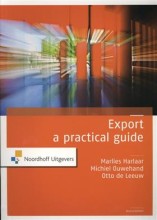Foreign payments
6 important questions on Foreign payments
Outside your own currency area, we distinguish two situations. Which?
- Countries with set exchange rates that seldom change value
- Countries with floating (fluctuating) exchange rates
What are factors that determine your choice of payment method?
- Size of non-payment risk
- Cost of payment method
- Length of the payment process
- Quality of the relationship
- The complexity of the payment method
- The distance to the buyer
- The culture of the country
- The market (competition)
- The political and economic situation in a country
- The requirements of banks and insurance companies
The "hassle" with foreign payments is probably the most challenging part of the export experience. Why?
- Higher grades + faster learning
- Never study anything twice
- 100% sure, 100% understanding
What are the 3 most commonly used methods of foreign payments?
What is currency hedging?
What are the types of currency risks?
The question on the page originate from the summary of the following study material:
- A unique study and practice tool
- Never study anything twice again
- Get the grades you hope for
- 100% sure, 100% understanding
































